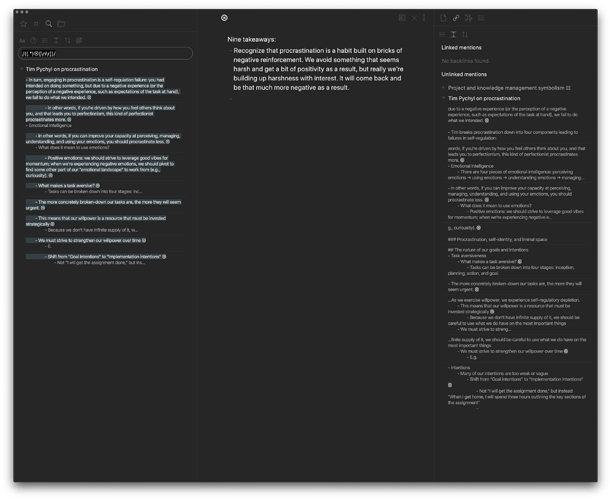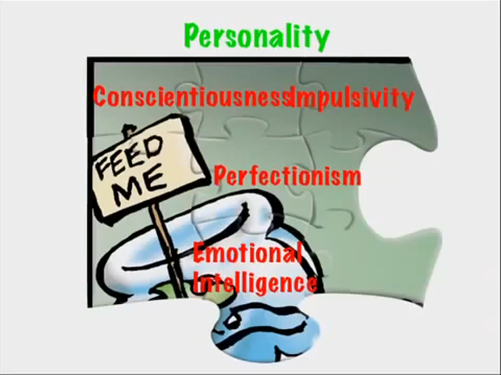Just sharing an interesting workflow I’ve been using this afternoon.
I’m working on my procrastination habit. (Always, eh?) So, this afternoon, I was watching, contemplating, and taking notes on this fantastic talk by Tim Pychyl.1
As I was working, I realized that I wanted to find a way to grasp the concepts I found most compelling—but I didn’t want to elevate the importance of these concepts to a tag-level. Tags are treasured by me, and I don’t want to clutter the tags I use with one-off use-cases like this one.
So, I got out my handy book o’ symbols2 and started ending the most valuable lines with ⊗.3
Later, when I was done listening to the talk, I wanted to compile a set of takeaways for me to try to work on. So, I created a “workbench note” titled—you guessed it!—⊗. Now I have a place in which I can make a mess without concern for the details. The backlinks pane of this note shows a number of unlinked mentions that might be handy. If I were working across multiple notes, I might have appended ⊗ on many lines on the database. This “workbench note” now provides a common space to draw those things together without pre-defining what exactly that looks like (e.g., with a nice note name.)
I can also search for every line in the knowledge base appended with ⊗ via Regex: /^((.*)⊗)$/. This gives me a concise collection of highlighted lines in the search box for me to work from. You could increase the specificity of this search, too—for instance, scoping it to a given file by adding a file:"some note" search term.
Later, when I’ve made sense of these takeaways, I’ll put the contents of this note in a more sensible place. Then I’ll trash the ⊗ symbol from the lines in the note I was working from. The workbench would then be clear for future messes.
Maybe I’ll never use this again. Still, thought I’d share while I was thinking about it. It feels like an easy, intuitive, and swift way of collecting ideas without pre-determining what you’re collecting them for.
1: Tim provides a down-to-Earth scholarship-informed walkthrough of why we procrastinate. It’s quite complex, which is why this is such a difficult problem for some people (like me!). Gotta love when pragmatics are so richly researched!
2: I keep a little collection of eye-catching Unicode symbols I find interesting, just in case something like this comes up.
3: Technically, this is the symbol for “tensor product.”



 ”
” 
